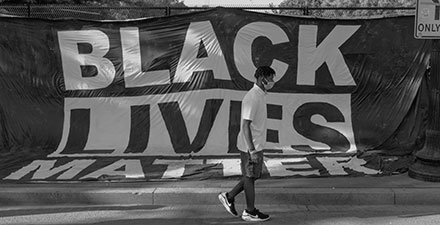Closing racial wealth gaps with community land trusts

While the debate around the politics of diversity, equity, and inclusion (DEI) and social impact investing goes on, the fact remains that there is a yawning racial wealth gap in the United States. Estimates vary, but the median household net worth of white families is about seven times that of Black families and five times that of Latinx families.
This concentration of wealth in smaller and smaller corners of the U.S. economy creates immediate and long-term economic and social challenges that affect all Americans. Beyond making us less competitive in the global economy, growing wealth inequality puts our democracy at risk; in a nation of “haves” and “have nots,” elite interests are completely removed from the needs of regular people.
Increasing homeownership rates to close the racial wealth gap
One of the biggest drivers of family wealth is homeownership. The median household wealth for homeowners is about 44 times that of renters. About 60% of homeowners’ wealth is in their homes. Yet, the Black homeownership rate is about 30 percentage points lower than the white homeownership rate, a gap that has not narrowed substantially in the last 20 years. These trends are a direct result of the “redlining” of communities of color for generations, which prevented investment dollars from improving those communities and encouraging homeownership.
To help close this racial wealth gap, my organization, Living Cities, has made increasing homeownership across demographic groups a top priority. We are a funder collaborative that harnesses the collective power of philanthropy, financial institutions, and local governments to close racial income and wealth gaps and advance inclusive and equitable economic progress in American cities.
In 2020, we launched the Closing the Gaps Network—22 cities whose public and civic leaders are working to identify, support, and model real, tangible solutions that go beyond platitudes and partisan arguments to address the lasting effects of the systemic discrimination that continues to affect our economy. In 2023, with funding from the Wells Fargo Foundation and the Citi Foundation, Living Cities awarded grants totaling $3.2 million to member cities to develop such initiatives. Many of these cities are tackling the issue of housing and homeownership to create a more equitable economy in their communities. Two are looking specifically at one viable strategy for doing so: community land trusts.
Community land trusts for equitable housing and neighborhood preservation
St. Paul, Minnesota, and Memphis, Tennessee, are exploring community and trusts supports an expanded approach to making homeownership accessible. St. Paul mayor Melvin Carter established an “Inheritance Fund” to offer down payment and home rehab assistance to descendants of residents of the Rondo neighborhood, a historically Black community that was destroyed to make way for a federal highway. Memphis is doing something similar in its Orange Mound neighborhood.
This is how community land trusts work: A nonprofit organization buys a plot of land or a set of homes and sells them to community members at below-market rates. This helps working people who can’t afford to buy or rent a home—especially in today’s expensive housing market—while also slowing development that might otherwise disrupt a neighborhood. In turn, this creates a path for residents to stay in their neighborhoods and not be priced out by gentrification.
Many community land trusts rely on foundations and other philanthropic entities to support their work, including purchasing land, at least at first. The goal is always for these nonprofits—run by and for community members—to become self-sufficient, relying on fees paid by residents, such as rent or fees on the use of land.
Community land trusts are growing in popularity as a way to help increase homeownership and reduce the cost of housing. According to the Lincoln Institute for Land Policy, there are now over 300 community land trusts in the U.S. They have been shown to enable families of color retain their homes—whether they rent, own, or are working toward homeownership through rent-to-own programs—helping to build equity. The Lincoln Institute found that nearly half of all families who own their homes within community land trusts are families of color.
More progress to be made
Unfortunately, the impact of community land trusts on homeownership has been limited in scope so far: The Lincoln Institute found only about 10,000 homes across all surveyed land trusts where families have some level of homeownership. To drive greater progress, organizations like the Grounded Solutions Network are taking on community land trusts as one solution in a coordinated campaign to increase affordable housing options.
At Living Cities, we see the potential of community land trusts as one of many tools to make housing more affordable and increase homeownership and wealth-building opportunities. We’re working with our partners to apply a racial equity and inclusion lens in revising their community land trust policies and practices. We’re also engaging with community leaders to understand the unique needs of their neighborhoods and create solutions. Using these lenses, we hope to unlock greater and more equitable sources for localized capital deployment and change systems. Philanthropic and city leaders can learn from current efforts and identify ways to begin building the equitable, abundant, and inclusive economy we all deserve.
Photo credit: SeventyFour via Getty Images






